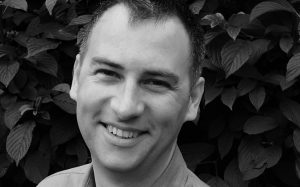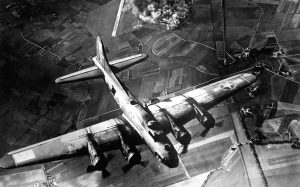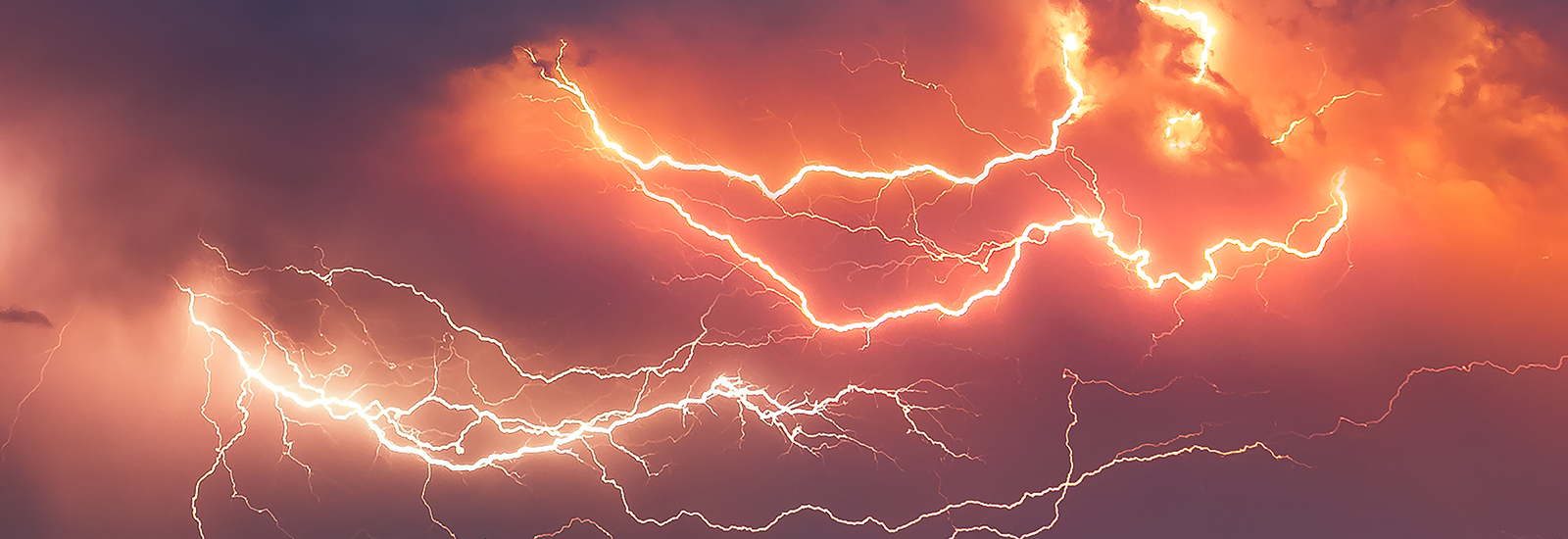Researchers tell us what we can learn from the Second World War bombing raids that made their mark on the edge of space.
Allied bombing raids during the Second World War may have caused devastation on the ground, but the explosions were so powerful that their effects were felt on the edge of space.
Research carried out at the University of Reading has revealed that the impact of explosives such as the 10-tonne “Grand Slam” dropped on German targets between 1943 and 1945 was so great that it weakened the electrified upper atmosphere, known as the ionosphere, above Slough – some 1,000km away.
 The findings, by Professor of Space and Atmospheric Physics, Chris Scott, and modern historian, Professor Patrick Major, will be used to further our understanding of how natural forces from below, including lightning, volcanic eruptions and earthquakes, affect the Earth’s upper atmosphere.
The findings, by Professor of Space and Atmospheric Physics, Chris Scott, and modern historian, Professor Patrick Major, will be used to further our understanding of how natural forces from below, including lightning, volcanic eruptions and earthquakes, affect the Earth’s upper atmosphere.
Professor Scott said: “The images of neighbourhoods across Europe reduced to rubble due to wartime air raids are a lasting reminder of the destruction that can be caused by man-made explosions – but the impact of these bombs way up in the Earth’s atmosphere has never been realised until now.
“It is astonishing to see how the ripples caused by man-made explosions can affect the edge of space.”
Professor Scott’s investigation stemmed from a previous piece of his research that showed that a specific layer of the ionosphere – which affects modern technologies such as radio communications, GPS systems, radio telescopes and some early warning radar – was actually enhanced by lightning storms.
The discovery posed the question of what was causing the enhancement. Were shockwaves from thunder rippling through the atmosphere or could it be the result of a bolt of lightning travelling upwards?
Realising that finding the answer would require ionospheric measurements from periods where there had been shockwaves but no lightning, Professor Scott began the hunt for significant ground-based explosions.
Slough and the Second World War
 An initial request for input from quarries and demolition companies proved fruitless as the explosives they used were too small, but the academic found his solution in information gathered at the Radio Research Centre in Slough during the Second World War.
An initial request for input from quarries and demolition companies proved fruitless as the explosives they used were too small, but the academic found his solution in information gathered at the Radio Research Centre in Slough during the Second World War.
The centre recorded daily data by sending sequences of radio pulses over a range of shortwave frequencies 100-300 km above the Earth’s surface to reveal the height and electron concentration of ionisation within the upper atmosphere.
“I knew that period was a source of explosions and that there was data available,” he explained. “My challenge was to think what I could possibly do to determine when the explosions were happening.”
Given Slough’s proximity to London, Professor Scott zeroed in on the bombing of England’s capital city during the Blitz and duly contacted Professor Major – who soon poured cold water on the idea.
“The problem was twofold,” said Professor Scott. “The bombing in the Blitz was continuous, so you have very little opportunity to see what it would be like if the bombing wasn’t happening.
“Secondly, the German Luftwaffe used twin-engine bombers which weren’t able to carry the sort of heavy bombs the Allied forces’ four-engined planes could manage.”
With the size and frequency of bombing raids over London ruling them out of the study, Professor Scott had to look further afield. As luck would have it, his cross-disciplinary relationship with Professor Major again came to the fore.
An astonishing discovery
The historian had been researching the socio-political aspects of the bombing of Berlin and had prepared a spreadsheet detailing the times and dates of Allied raids over the German capital between 1943 and 1945.
The academics were able to cross-check this data with the information from the Radio Research Centre – and were amazed by what they found.
Professor Scott said: “Berlin is 1,000 km away from Slough as the bomber flies, so I wasn’t expecting to see anything. But I plugged the numbers in and, low and behold, these bombing raids in Germany seemed to be weakening the ionosphere above Slough.
“I was astonished that something so far away could have such an effect, and it was the first clue that perhaps it isn’t the same shockwaves from the thunderstorms causing the atmospheric disturbance – it is most likely some electrical connection because if you just have the bombing alone it weakens the ionosphere. This is really helping us to understand the physics.”
The phenomenal horizontal distance across which the Berlin bombings were making themselves felt is remarkable, but the vertical figures are equally astounding. The layers at which the recordings were made are about 250 km up in the atmosphere – 150km higher than you have to fly to be classified as an astronaut. As Professor Scott put it, “it’s space by anyone’s definition”.
Boosted by the Berlin data, the researchers widened their geographic net to include other major air raids over continental Europe and were able to show a “significant response” from bombing across Germany and in France – including those in Normandy in support of the D-Day landings.
Aside from their historical significance, Professor Scott and Professor Major’s findings may make it easier for scientists to predict changes in the ionosphere caused by events below rather than the solar activity above, which is already comparatively well understood. Professor Scott said:
“We have got this quantifiable result, we know what sort of energies cause an effect and can look to nature to see what we think is likely to happen.
“Major thunderstorms might be causing some of this variability, seismic activity – earthquakes and volcanoes – too, and we know that there are some meteorological phenomena known as sudden stratospheric warmings that can also influence the ionosphere.
“We have computer models that tell us when it’s likely to be thundery and what the energy of those storms is likely to be, so we could potentially start to have a much better understanding of where and when the ionosphere is going to be perturbed.”
The Reading-based ionospheric investigation provides an excellent example of the benefit of cross-department collaboration and Professor Scott was quick to acknowledge the importance of discoveries made “at the boundaries of disciplines”.
“Most of the most interesting conversations I have had are with people who have an interest in some other field,” he concluded. “Between you, you can try and bring your expertise to bear and get some unique insights as a consequence.”
Find out more about Professor Scott and Professor Major’s research.




